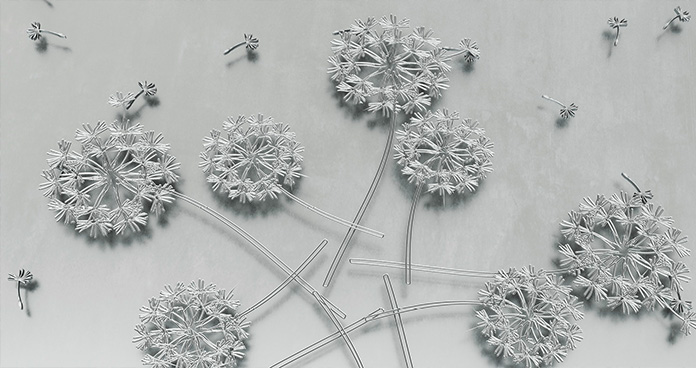
The concept of circularity requires analyzing products’ entire value chain—broken down by environmental, economic, and social factors—across all phases of their life cycle: from the raw materials to the products’ manufacture, utilization, and/or consumption, all the way to the end of their life cycle, which brings about the onset of a new life cycle.
voestalpine has been implementing and continually refining the core concerns of circularity at the level of both processes and products in many areas for a long time.
In and of themselves, steel products have a long useful life and contribute to the ongoing development of the circular approach. Modern lightweight steel and production processes (e.g., additive manufacturing) make it possible to reduce the amount of raw materials required for a given product. In their utilization phase, steel products can be repaired and put back together again through various processes, which extends their useful lives. Given their resistance and longevity, steel products can also be repurposed and repeatedly recycled. At the end of their useful lives, finally, they serve as secondary raw materials that are used to manufacture new high-value steel products. The cycle is closed and can be repeated any number of times; this is referred to as the “multirecycling of steel.” The use of waste and recycled materials from the company’s own steel production also contributes to the circular economy, as does the use of waste and secondary raw materials from external production processes. In turn, the by-products of steel production can be utilized as secondary raw materials to manufacture products in other industries. Different types of blast furnace sand that are generated in the production of steel are examples of this kind of industrial symbiosis. They are used as grinding additives in the cement industry, thus conserving natural resources and lowering CO2 emissions from the production of cement. voestalpine uses research & development to push the efficient use of alternative and/or secondary sources of raw materials.
The company’s current focus on determining products’ sustainability lies on environmental issues. Specifically, this involves analyzing the environmental impact of products and their decarbonization. Life cycle assessments (LCAs) are both a core element of this process and a methodological tool. This requires uniform, workable, and globally comparable methods that can help to level the playing field internationally, thus promoting sustainable economic growth.
Environmental product declarations (EPDs) are a critical tool that voestalpine uses to determine and communicate products’ environmental impact based on their life cycle assessments. EPDs are based on two international standards—EN 15804 and ISO 14025—and are audited and verified by independent third parties. voestalpine has listed and published environmental product declarations for various products—e.g., hot-formed strip steel; hot-dip galvanized strip steel; hot-formed, pressed steel sections; prestressed concrete turnout sleepers; as well as rails and seamless tubes—in the declarations program of the German “Institut Bauen und Umwelt” (IBU), an association of building product manufacturers. EPDs for a number of other products are in preparation.
The decarbonization of the steel industry is a considerable challenge for both process and product development and is inseparable from circularity. It is important to ensure in the transformation toward largely CO2 free production that the high quality of products and raw materials remains the same. Moreover, a technological transformation also affects existent substance and materials cycles as well as symbiotic industrial relationships and thus requires the ongoing and/or new development of sectoral and cross-sectoral approaches to circularity.
Regular exchanges with various stakeholders regarding decarbonization and product sustainability along the supply and value chains help voestalpine to continually refine its strategy for CO2-reduced steel production, which must also be climate neutral in the long term, and to flesh it out step by step.
To create the greatest possible transparency for its stakeholders and make the stages of the transformation as comparable as possible, the voestalpine Group undertakes to set targets for reducing its greenhouse gas (GHG) emissions based on the parameters of the Science Based Targets initiative (SBTi). SBTi reviews and validates the Scope 1, Scope 2, and Scope 3 emissions targets based on state-of-the-art climate sciences.
As part of its comprehensive decarbonization strategy, voestalpine’s Steel Division has already leveraged its “CO2- reduced steel” climate project to implement short-term decarbonization measures at its Linz, Austria, plant. The aim is to cut direct CO2 emissions along the Group’s existing steelmaking process chain. The environmental effects of the resulting products, particularly their carbon footprint, are determined and reported by way of LCAs carried out in accordance with internationally accepted methods and standards.
Sustainable and decarbonized products are becoming ever more important to the supply and value chains. It is absolutely necessary, therefore, to develop uniform definitions, methodologies, and parameters and thus level the playing field in the international competition for sustainable products.
These developments are supported by cross-sectoral entities, for example, by the advocacy organization, ResponsibleSteel, which voestalpine joined in 2019; it was one of the first steel companies to do so.

